Alaska is famous for its wild beauty and vast wilderness, hosting some of the United States' most stunning national parks. This guide focuses on six of Alaska's national parks accessible to travelers.
Our focus on these six parks is due to their variety of natural wonders, historical significance, and wildlife, all available to visitors without the need for extreme wilderness treks.
You'll discover parks filled with towering peaks, glaciers, and historical sites that tell tales of adventurers.
The 6 highlighted parks include:
- Denali National Park: Home to North America's tallest peak and accessible wilderness adventures.
- Kenai Fjords National Park: Where glaciers meet the sea in a stunning marine environment.
- Wrangell-St. Elias National Park: Offering adventures for those ready to tackle its vast, off-road terrains.
- Klondike Gold Rush National Historical Park: A glimpse into the past in Skagway.
- Glacier Bay National Park: A must-visit for its breathtaking glaciers and marine wildlife.
- Katmai National Park: Renowned for bear viewing as they fish for salmon in the falls.
The guide also mentions more remote parks, outlining the challenges that might keep them off the typical traveler's path. While Alaska's other national parks possess unique allure, their remote locations make them challenging for the average visitor to explore.
This guide aims to equip you with the knowledge to plan a memorable adventure in Alaska's more readily visited natural treasures, maximizing your experience in the Last Frontier.
Let's discuss the highlights of each park and how you can immerse yourself in Alaska's breathtaking landscapes.
Six of Alaska's Most Visitable National Parks
Alaska is renowned for its untouched wilderness and breathtaking landscapes, home to numerous national parks. From the towering peaks of Denali to the glacier-filled bays of Kenai Fjords, these parks offer adventures for everyone.
#1: Denali National Park
Denali is one of the few places visitors can witness Alaska's wildlife and the majesty of North America's highest peak up close. The park road offers spectacular views and encounters with the park's inhabitants.
For the adventurous, Denali's vast wilderness beckons with opportunities for hiking, viewing wildlife, and experiencing nature's solitude.
While the park offers boundless exploration, certain areas like the Eielson Visitor Center provide structured ways to appreciate its beauty, accessible by park shuttle or tour bus.
Key Activities in Denali:
- Scenic Drives: The park road offers breathtaking views and wildlife sightings.
- Hiking: Trails and wilderness hikes cater to all levels of adventurers.
- Ranger Programs: Engage with the park through educational hikes and talks.
- Flightseeing: Aerial tours offer a unique perspective of Denali's landscape.
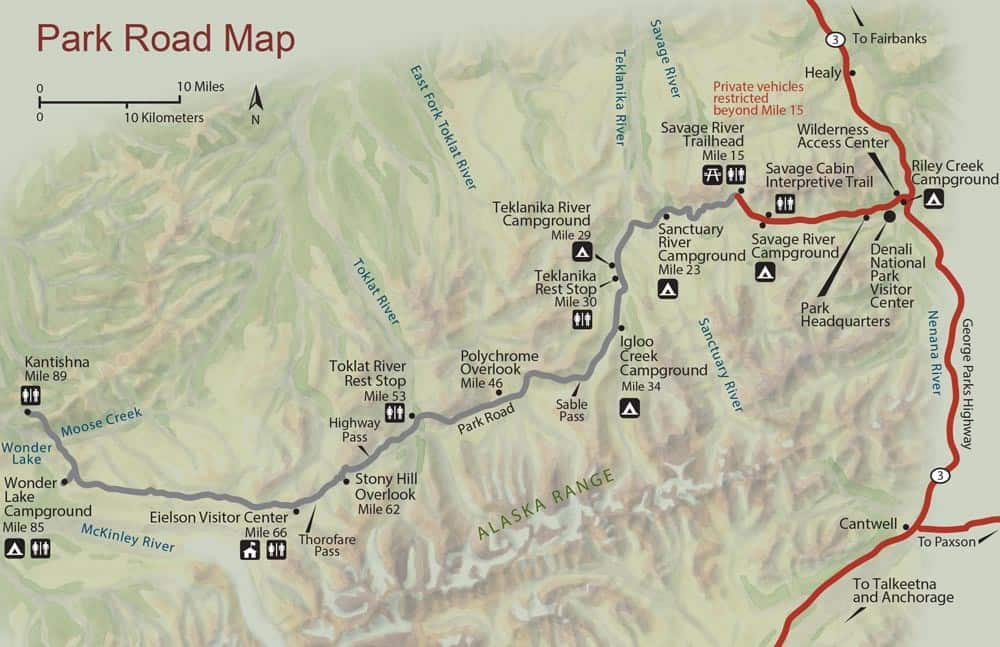
Multi-Day Hiking in Denali:
For those seeking a deeper immersion into the Alaskan wilderness, Denali offers the ultimate challenge: multi-day hikes across its unmarked, expansive wilds. This level of adventure requires thorough preparation, awareness of the risks, and respect for the park's natural elements.
Hikers must obtain a free wilderness hiking permit, be equipped with bear-proof containers for food storage, and have the skills to navigate and survive in the remote backcountry.
With no cell service and limited amenities beyond the park road, adventurers must be self-sufficient and ready for extreme weather conditions, wildlife encounters, and the sheer isolation of the Alaskan wilderness.
Such a journey offers an unparalleled connection with nature, but it's essential to fully prepare and understand the responsibilities involved.
Getting There and When to Visit Denali:
Denali National Park is a gem in Alaska's wilderness, accessible via Highway 3 from Anchorage or Fairbanks or by the scenic Alaska Railroad. The prime visiting period is from late May through mid-September when the park fully comes to life.
However, the allure of Denali extends beyond these months, offering unique experiences in both the quieter shoulder seasons and the serene winter months.
The key to a smooth Denali adventure is meticulous planning, especially regarding accommodations and park logistics.
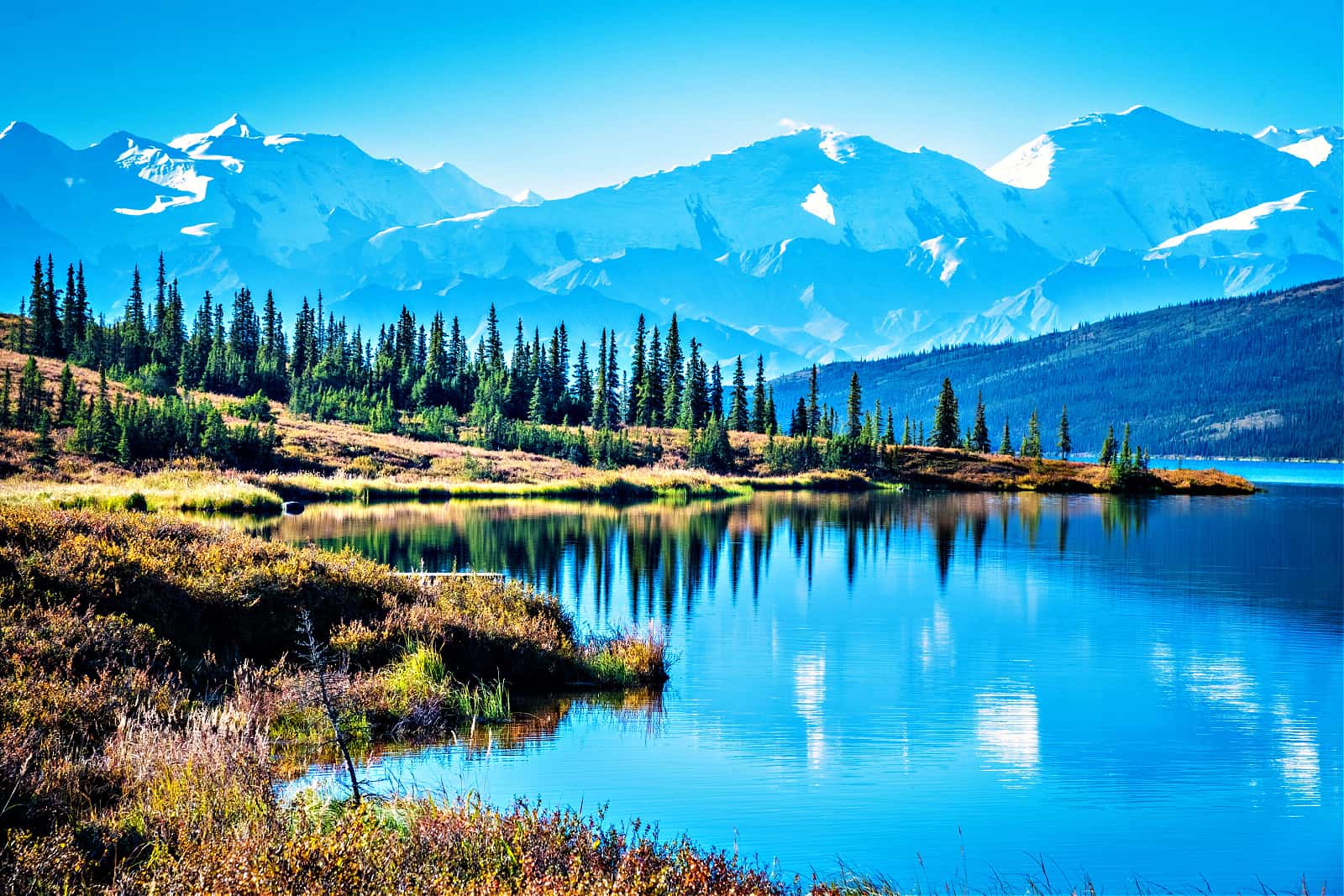
Accommodation Tips for Denali Visitors:
Denali National Park offers various lodging options, from the immersion of rustic campgrounds to the convenience of cozy hotels catering to different preferences and budgets.
Denali features several campgrounds for campers, with specific sites accommodating RVs, provided you have the necessary permit. These camping spots directly connect with nature but come with limited amenities, highlighting the need for thorough preparation.
For visitors looking for hotel accommodations, booking well in advance is advised due to Denali's widespread appeal.
Accommodations close to the park entrance are in high demand, with a broad range of rates reflecting seasonal variations and the level of demand; for those seeking value without compromising on proximity to Denali, the nearby town of Healy offers a viable alternative, blending convenience with more attractive pricing.
Early reservation is critical to securing your preferred lodging at a competitive rate, as demand can drive up prices, especially for last-minute bookings.
Our experiences have shown that planning ahead guarantees a place to stay and contributes significantly to the overall enjoyment and ease of your Denali adventure.
For an in-depth look at our journey and tips for your visit, don't miss our detailed Denali trip report.
#2: Kenai Fjords National Park
Kenai Fjords National Park, where glaciers descend from the mountains to meet the sea, has profound natural beauty. This park, adjacent to the quaint town of Seward, is easily reachable from Anchorage by road or rail, making it one of Alaska's most visitor-friendly national parks.
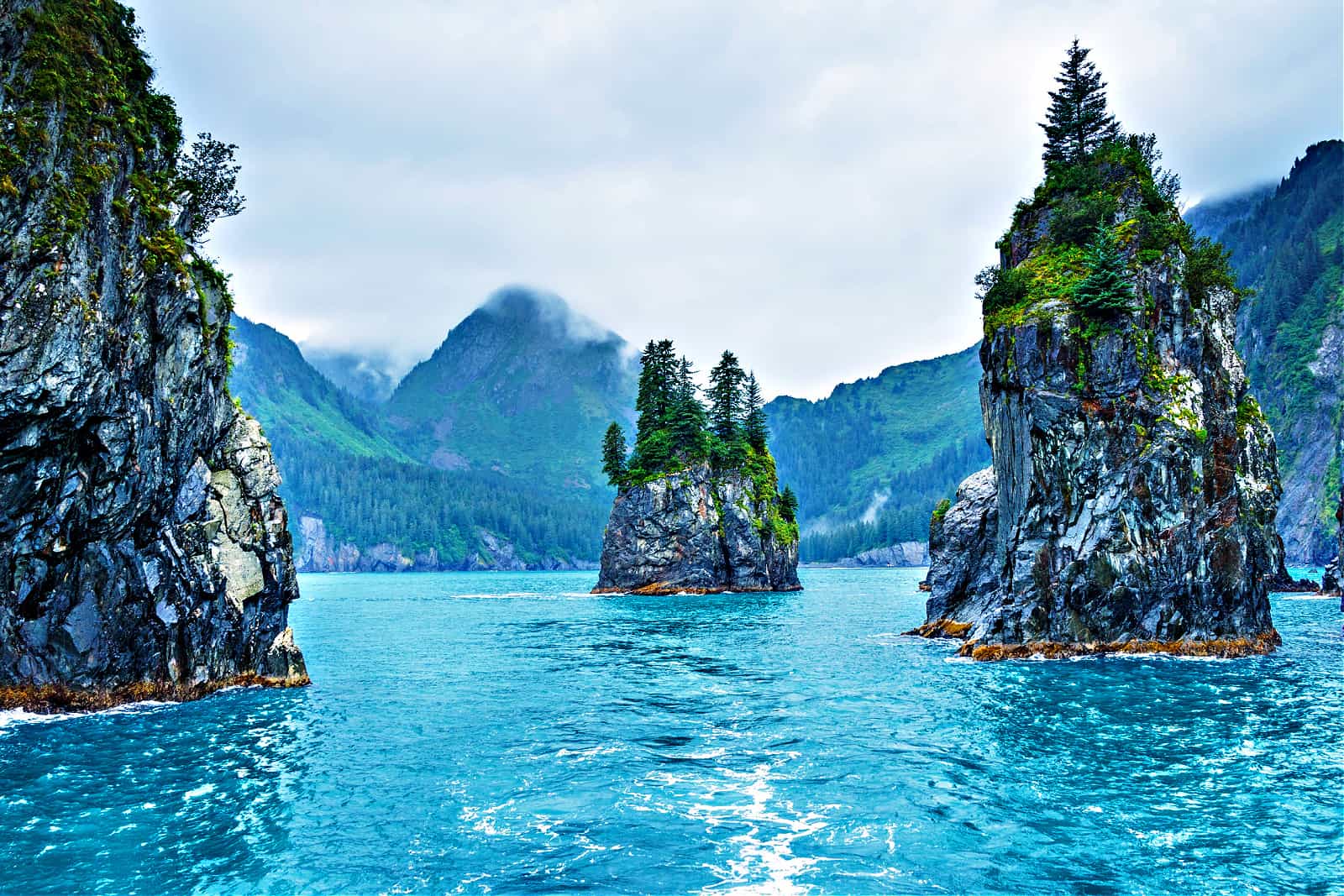
Exploring Kenai Fjords National Park:
Activities in Kenai Fjords cater to nature lovers and adventure seekers alike. Key attractions include:
- Hiking to Exit Glacier: Witness the impacts of climate change firsthand at this rapidly receding glacier. Informative trails show where the glacier once stood, underscoring the urgency of environmental stewardship.
- Harding Icefield Trail: For those seeking a challenging hike, the trail up to the Harding Icefield offers rewarding views of the vast icefield that feeds the park's many glaciers.
- Glacier Cruises: A cruise is an unparalleled way to see the park's marine wildlife and witness the awe-inspiring spectacle of glaciers calving into the sea. Our own experience on a Kenai Fjords cruise, complete with stunning visuals and personal insights, is shared in our trip report.
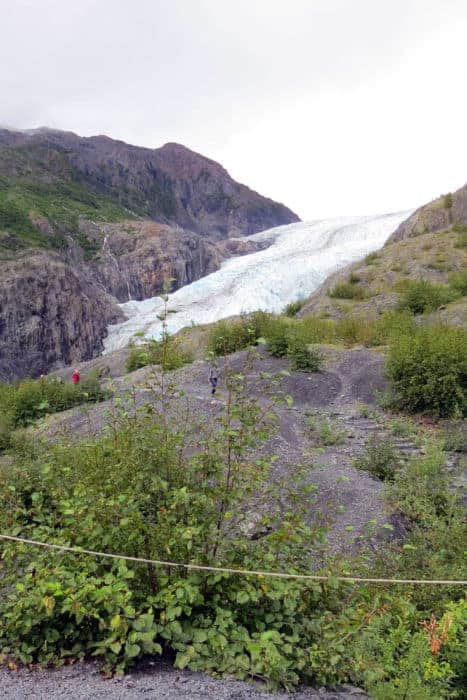
Visitor Information:
Kenai Fjords is notably accessible, located just outside the town of Seward. The drive from Anchorage, along the scenic Seward Highway, takes approximately 2.5 hours.
Alternatively, the Alaska Railroad offers a memorable journey from Anchorage to Seward, linking travelers directly with the park's wonders.
When to Visit and What to Expect:
The prime visiting months are June through August, when the park is fully alive with activity, and the maritime climate is at its most inviting.
Though open year-round, the Exit Glacier road closes in winter due to snow, making spring through fall the optimal times for a visit.
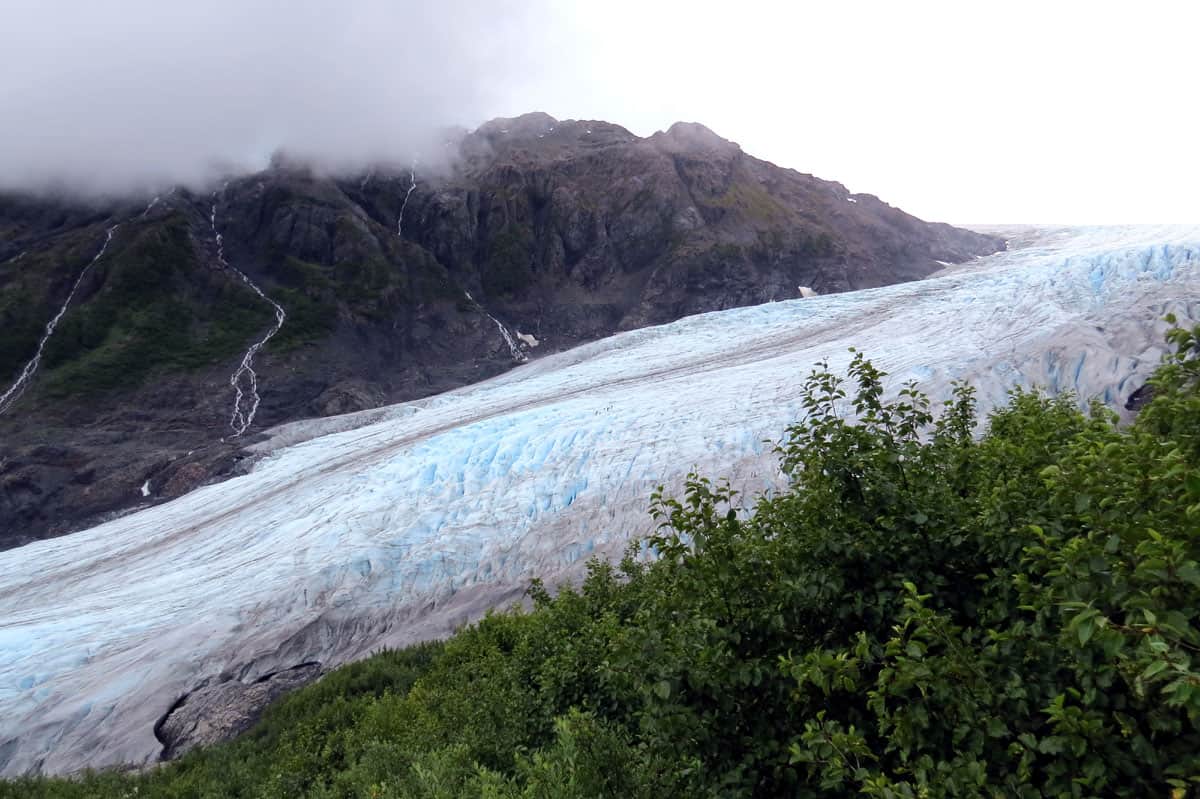
The maritime climate means the weather can shift quickly, blending cool, rainy days with warmer, sunny ones. Layered clothing is essential, especially for those embarking on a glacier cruise, where temperatures can be chillier on the water.
For more detailed insights into navigating Kenai Fjords National Park and to experience the magic of glacier calving, check out our comprehensive Kenai Fjords cruise trip report.
#3: Wrangell-St Elias National Park
Wrangell-St. Elias stretches across a landscape as vast as Yosemite, Yellowstone, and Switzerland combined, making it the United States' largest national park.
It offers diverse activities, from scenic drives along the McCarthy Road to challenging hikes in the park's vast wilderness areas.
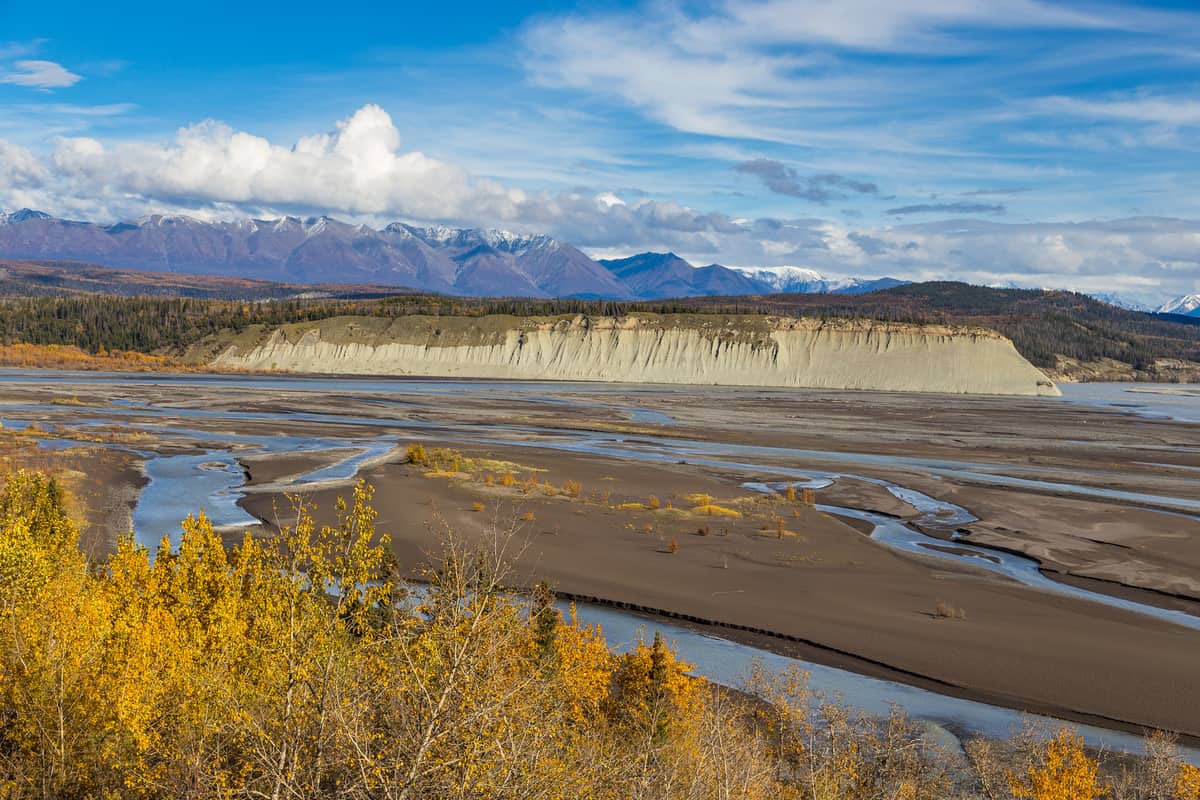
Visitors can also take local or aerial tours to witness the impressive mountain ranges dominating the park. For hiking enthusiasts, Wrangell-St. Elias provides an array of trails ranging from easy walks to strenuous multi-day treks through pristine wilderness.
How to Visit & Tips:
The park's remote nature means that accessibility is limited. There are two main ways to access Wrangell-St. Elias: the McCarthy Road and the Nabesna Road. Neither road is paved, presenting challenges for those without off-road capable vehicles.
Rental car users should check their policy on off-road driving. For an immersive experience, consider hiring a guide for a day tour or booking a flightseeing tour to gain a unique perspective of the park's vast terrain.
Exploring Shared Mountain Ridges:
Wrangell-St. Elias shares its majestic mountain ridges with Canada's Kluane National Park, creating a continuous expanse of natural beauty across the border.
This cross-border connection highlights the park's extensive wilderness, with some visitors finding the Canadian side along the Alaska Highway offering distinct perspectives of these towering ranges.
This international park partnership underscores the region's grand scale and unspoiled nature.
Visitor's Information & Best Times to Visit:
Though Wrangell-St. Elias is open year-round; the best time to visit is during the summer months from June to September when the weather is milder, and access roads are more navigable.
The park operates without entrance stations or gates, allowing visitors to enter anytime. For detailed planning, visit the park's official website for information on camping, tours, and specific activities.
Weather Conditions:
The park experiences various weather conditions due to its vast size and varied landscapes. Summers can be cool and wet, with temperatures often in the 50s (Fahrenheit) during the day, while winters are cold and harsh, with temperatures plunging well below freezing.
Given the park's high elevation areas, visitors should prepare for rapidly changing weather and possible snowfall, even in summer. Packing layered clothing and training for all conditions is advisable for a comfortable and safe visit.
#4: Klondike Gold Rush National Historical Park
Klondike Gold Rush National Historical Park, located in the quaint town of Skagway, Alaska, commemorates the thrilling era of the late 19th-century gold rush.
Here, thousands embarked on a grueling 600-mile journey to the Yukon's goldfields, an adventure that shaped the region's history and culture.
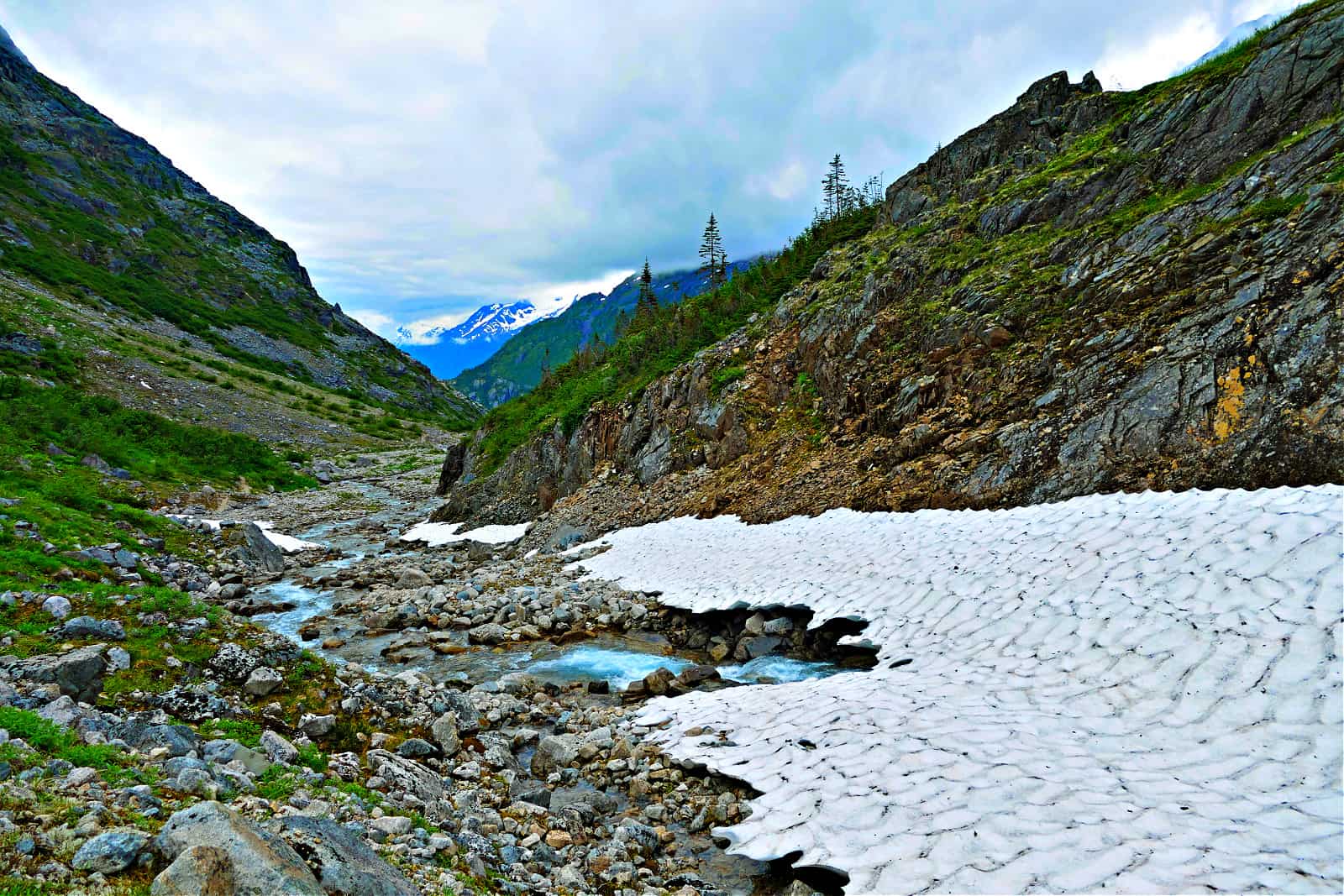
Visiting the Park:
Today, Klondike Gold Rush National Historical Park is a pivotal attraction, captivating those who wish to immerse themselves in the adventures of the late 19th-century gold seekers.
The park is not limited to those arriving by cruise; it's one of the unique destinations along the Inner Passage accessible by both road and sea.
While many visitors incorporate Skagway as a cruise highlight, you can also have a scenic drive through Canada. However, be prepared for a lengthy journey from Anchorage, taking approximately 16 hours.
This route offers an enriching experience, especially if you plan to extend your exploration to include Whitehorse in the Yukon, providing a deeper dive into the historical context of the gold rush era.
This extended journey connects you more closely with history and the expansive landscapes that shaped the narratives of those seeking fortunes.

Park Headquarters and Visitor Information:
The park's visitor center, housed in the historic White Pass & Yukon Route depot at 291 Broadway St. in Skagway, is the starting point for your journey into the past.
Open year-round with varying seasonal hours, the center offers educational programs, films, and exhibits on the Gold Rush era with no admission fee.
Weather and Planning Your Visit:
Skagway's climate can be unpredictable, characterized by frequent rain and brisk winds. Summer temperatures range comfortably from the mid-40s to low-70s (Fahrenheit), making it an ideal time for exploration.
Visitors are advised to dress in layers and prepare for sudden weather changes to enjoy their journey through history.
Check the official Klondike Gold Rush National Historical Park website for comprehensive details on park activities, history, and planning your visit.
#5: Glacier Bay National Park
Glacier Bay National Park, a jewel in Alaska's Inside Passage, spans over 3.3 million acres of glaciers, dynamic mountains, pristine coastlines, and temperate rainforests.
Recognized as a UNESCO World Heritage Site, this marine wilderness offers an unparalleled experience of Alaska's natural beauty.
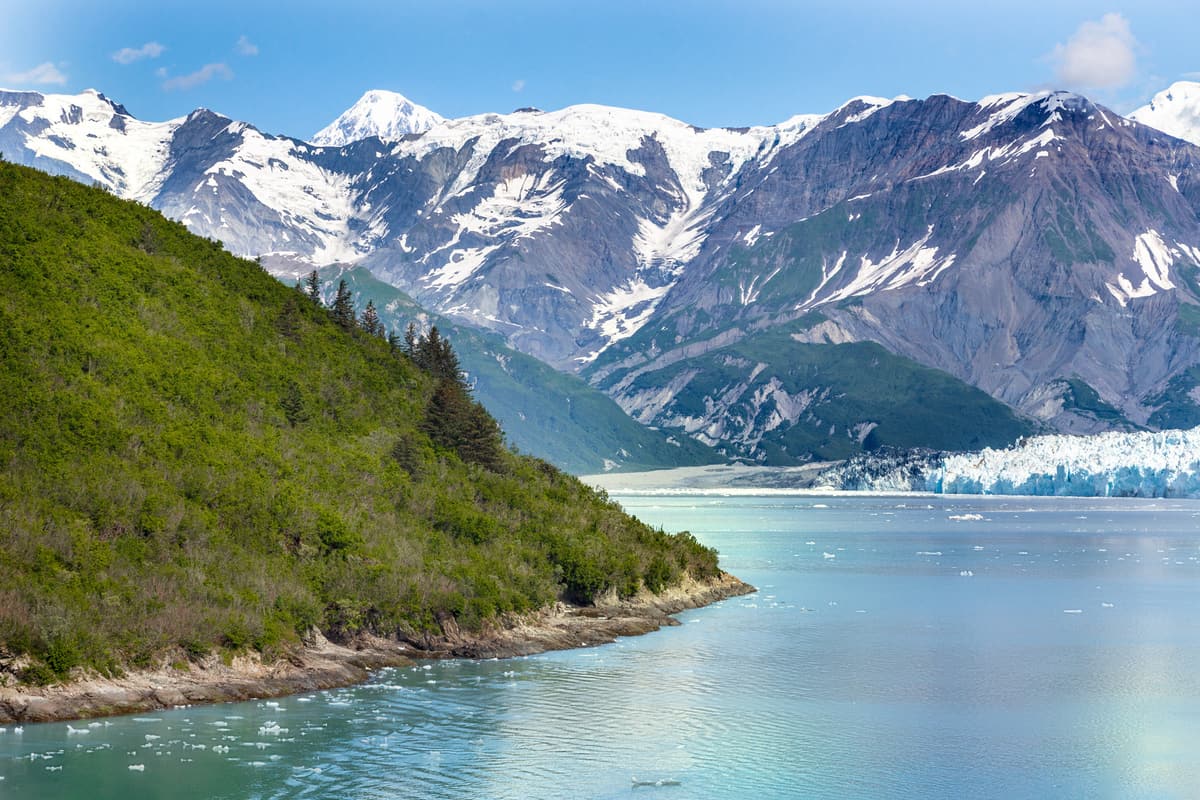
Visiting Glacier Bay: Access and Insights:
Located west of Juneau, access to Glacier Bay National Park is primarily by air or sea, making it a unique adventure. The tiny town of Gustavus serves as the gateway, with Alaska Airlines providing daily flights from Juneau during summer.
Additionally, small air taxis and charter services offer year-round access, and the Alaska Marine Highway ferries serve as a scenic alternative from Juneau.
Many visitors experience Glacier Bay from the deck of a cruise ship, but for those seeking a more intimate connection, daily boat tours from Bartlett Cove travel deep into the park's heart.
These tours present an up-close view of the majestic glaciers, icebergs, and rich wildlife, encapsulating the essence of Glacier Bay.
What to See and Do:
Beyond the spectacle of calving glaciers and ice-strewn waters, Glacier Bay is a haven for wildlife enthusiasts and nature lovers.
The daily boat tour from Bartlett Cove is a journey through scenic landscapes and an opportunity to witness the park's dynamic ecosystem, from whales breaching in the waters to eagles soaring above.
Best Times to Visit:
The peak season runs from late May to early September, with July attracting the most visitors.
However, Glacier Bay's awe-inspiring beauty can be enjoyed year-round, with the park headquarters and visitor services maintaining hours Monday through Friday, from 8:00 AM to 4:30 PM, even in the quieter months.
Visitor's Information:
For further details on planning your visit, including activities and ranger-led programs, the official website provides comprehensive information.
Rangers can enhance your visit with guided walks, educational films, and evening programs, offering insights into the park's rich natural and cultural heritage.
Weather and What to Wear:
Despite its northern location, Glacier Bay's maritime climate is milder than much of Alaska, though summer visitors should still come prepared for rain and cool temperatures. Adequate ra
in gear, including waterproof boots and a warm jacket, is essential for comfort, especially when exploring the park by boat. The driest months, offering a higher chance of sunny weather, are April, May, and June, with average temperatures ranging from 50° to 60° F (10° to 15° C).
Glacier Bay's enchantment lies in its landscapes and the ever-changing interplay of light, water, and ice, offering a unique experience with every visit.
#6: Katmai National Park
Katmai National Park is a haven for nature lovers and wildlife enthusiasts, offering unparalleled opportunities to observe grizzly bears in their natural environment.
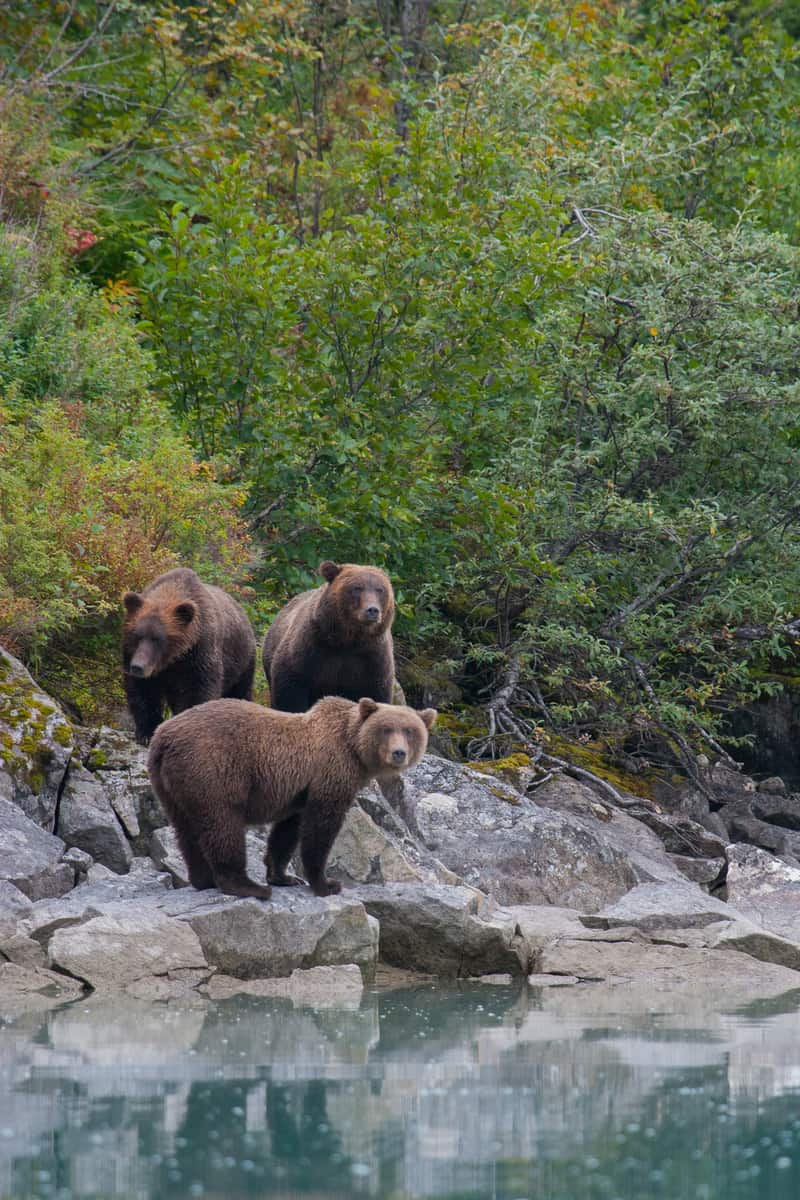
The park's geography, marked by the northern Alaska Peninsula, creates a unique ecosystem where the annual salmon run provides a spectacular backdrop for bear viewing, especially at Brooks Camp.
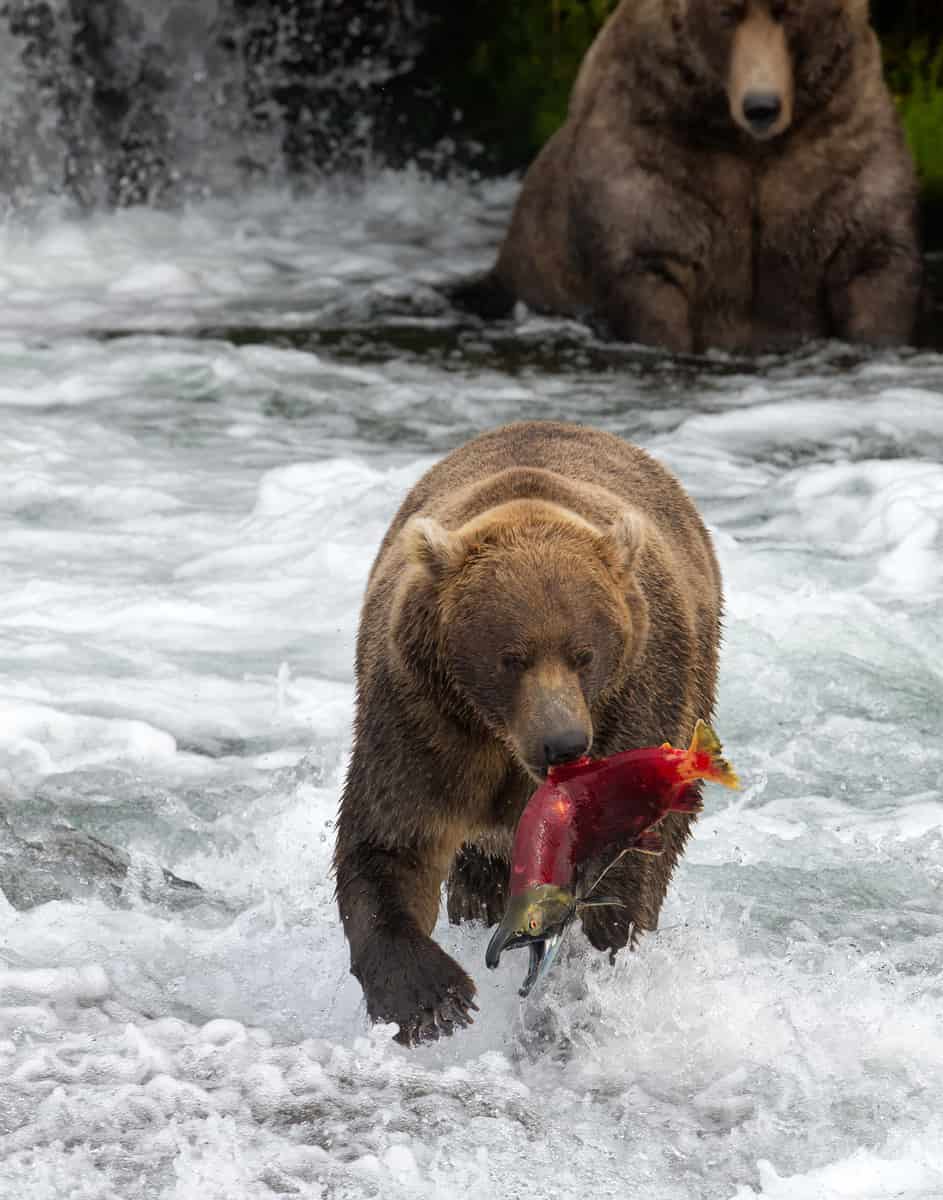
Navigating Your Way to Katmai:
Katmai National Park is located on the northern Alaska Peninsula, northwest of Kodiak Island and southwest of Homer, Alaska.
The park’s headquarters is in King Salmon, about 290 air miles southwest of Anchorage. There are no roads from inland Alaska to Katmai, and it's accessible only by boat or air.
Planning Your Visit:
Visiting Katmai is an experience that requires preparation and planning, especially for those aiming to witness the bear viewing at Brooks Camp, one of the park's most sought-after experiences.
Beyond bear-watching, Katmai offers many activities, including fishing, kayaking, and exploring the volcanic landscape that shapes much of the park's terrain.
Visitor's Resources and Information:
The official park website is an essential resource for detailed information on visiting Katmai, including guidelines on bear viewing, accommodation options, and activity bookings.
The park welcomes visitors year-round, with the optimal time for bear viewing coinciding with the salmon run from late July through September.
Weather and Packing Tips:
Katmai's location, caught between the North Pacific Ocean and the Bering Sea, means visitors should be ready for unpredictable weather. The region can experience a range of conditions, from mild, sunny days to sudden storms.
Adequate preparation, including waterproof gear, warm layers, and sturdy footwear, ensures a comfortable and safe exploration of Katmai's wild beauty.
Katmai National Park invites adventurers to witness the majesty of Alaska's wilderness, from its iconic bear populations to the rugged, untouched landscapes that define the Alaska Peninsula.
A visit to Katmai is not just a journey into the heart of the wild but a testament to the enduring allure of nature's raw power and beauty.
Additional Alaska National Parks: Remote Yet Remarkable
Alaska's allure doesn't end with its more accessible parks. The state is also home to some of the most remote yet remarkable national treasures in the United States.
While visiting these parks presents logistical challenges, their untouched beauty, and unique features make them worth mentioning.
Here's a brief overview of four additional parks that, despite their less straightforward access, hold wonders emblematic of Alaska's wild heart.
Sitka National Historical Park
Accessible primarily to those traveling along the Inner Passage, Sitka National Historical Park offers a rich tapestry of Alaska's history and culture. It commemorates the site of a battle between the indigenous Kiks.ádi Tlingit and Russian traders.
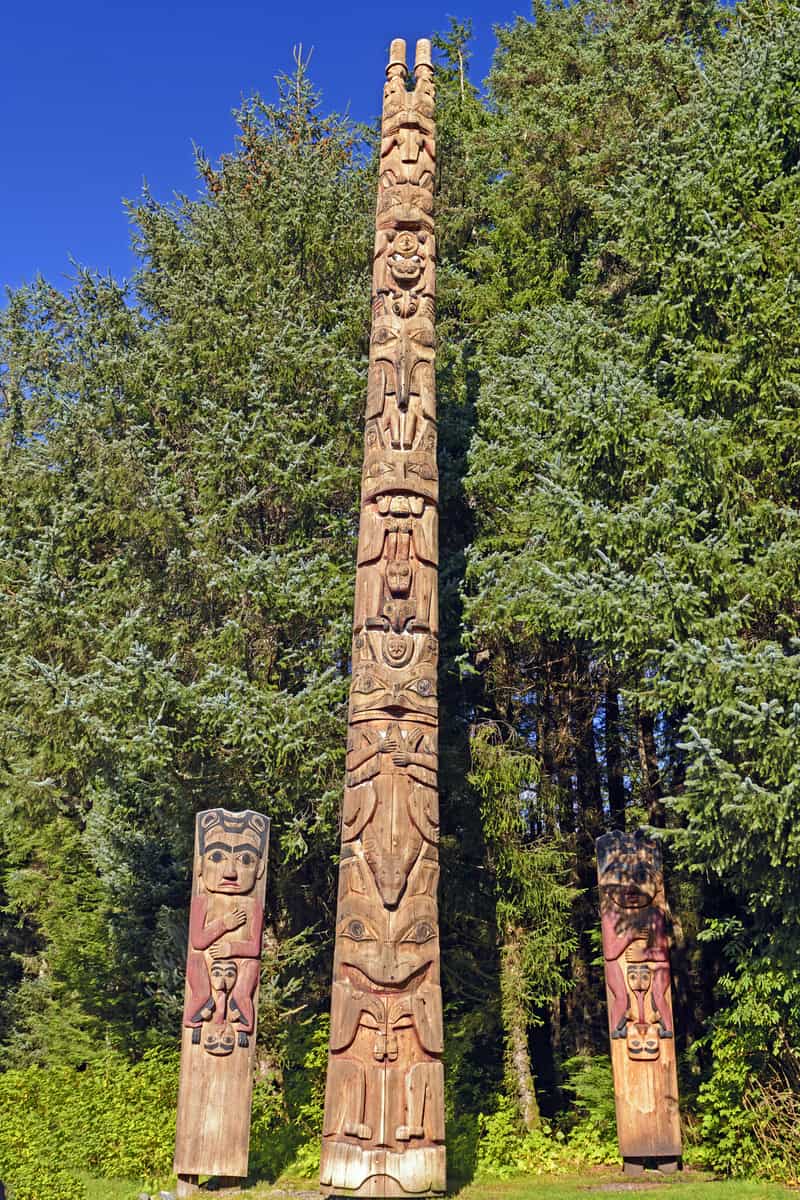
The park is renowned for its collection of totem poles amidst lush rainforest settings, providing a window into the region's cultural heritage. Visitors can explore the park and the charming town of Sitka, where history and nature converge beautifully.
Gates Of The Arctic National Park
Representing the epitome of wilderness, Gates Of The Arctic National Park is a vast expanse of arctic beauty. Larger than Denali and void of roads or trails, this park challenges the adventurous with its raw, untouched landscapes.
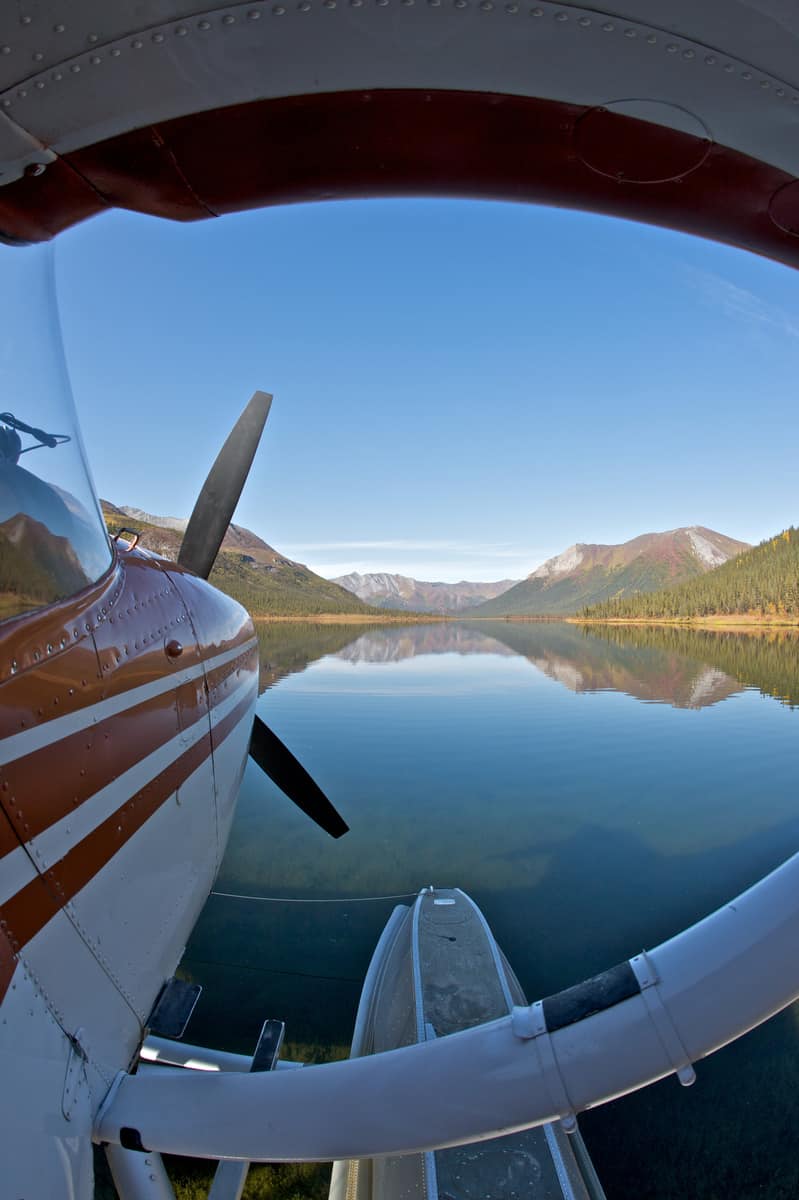
Accessible via air taxi from Fairbanks, it offers breathtaking scenery of six scenic rivers and diverse ecosystems. Preparedness for outdoor survival skills is essential for anyone venturing into this pristine wilderness.
Research well before you go out on this adventure. This pristine wilderness may be beautiful but dangerous and lacks cell coverage or service. Take this warning from the park website very seriously -
Visitors to the park should be PROFICIENT in outdoor survival skills, and be prepared to care for their own life and their partner(s) if an emergency arises.
Kobuk Valley National Park
The park's isolation means access is primarily by air, making visits a well-planned expedition into one of Alaska's most extraordinary landscapes.
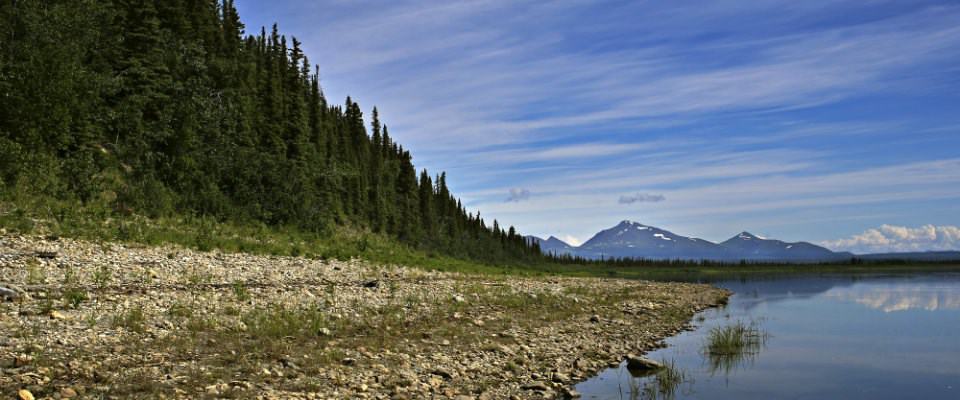
Kobuk Valley is a land of contrasts, with sand dunes, rivers, and the remarkable sight of migrating caribou. Remote and majestic, it's a place where the adventurous can witness the natural phenomena unique to the Arctic.
Lake Clark National Park
Lake Clark National Park is a mosaic of stunning landscapes, from turquoise lakes to volcanic steam. Its remoteness adds to the allure, with access limited to boats or small aircraft.
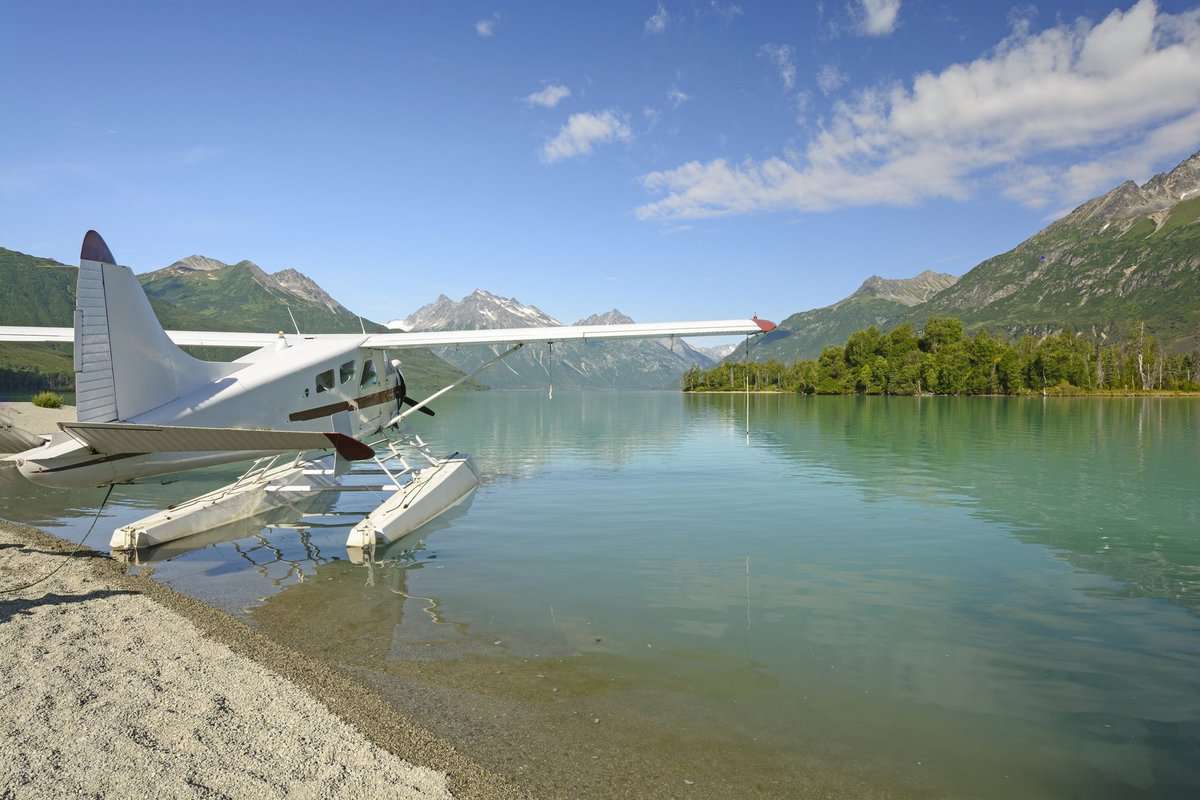
The park offers a sanctuary for wildlife, including bears and salmon, set against a backdrop of craggy mountains and steaming volcanoes. Despite the logistical challenges, visiting Lake Clark is a deep dive into the heart of Alaska's wild beauty.
These parks, while less accessible, are notable for their undisturbed nature and the unique experiences they offer. Their remote locations mean fewer visitors and a chance to see Alaska at its most wild and unspoiled.
The rewards for those willing to undertake the journey are unparalleled views, profound solitude, and a deeper connection with the natural world.
Wrapping Up Alaska's National Parks
That brings us to the end of our comprehensive guide on Alaska's national parks. From the accessible marvels like Denali and Kenai Fjords to the remote expanses of Gates of the Arctic and Lake Clark, we've covered the breadth of what these natural wonders offer.
Each park presents a unique aspect of Alaska's diverse landscapes, history, and wildlife, providing something special for every adventurer.
To help you navigate and plan your journey, we have the following map that pinpoints the location of each park. This visual guide aims to better understand where each park sits within the vast Alaskan wilderness.
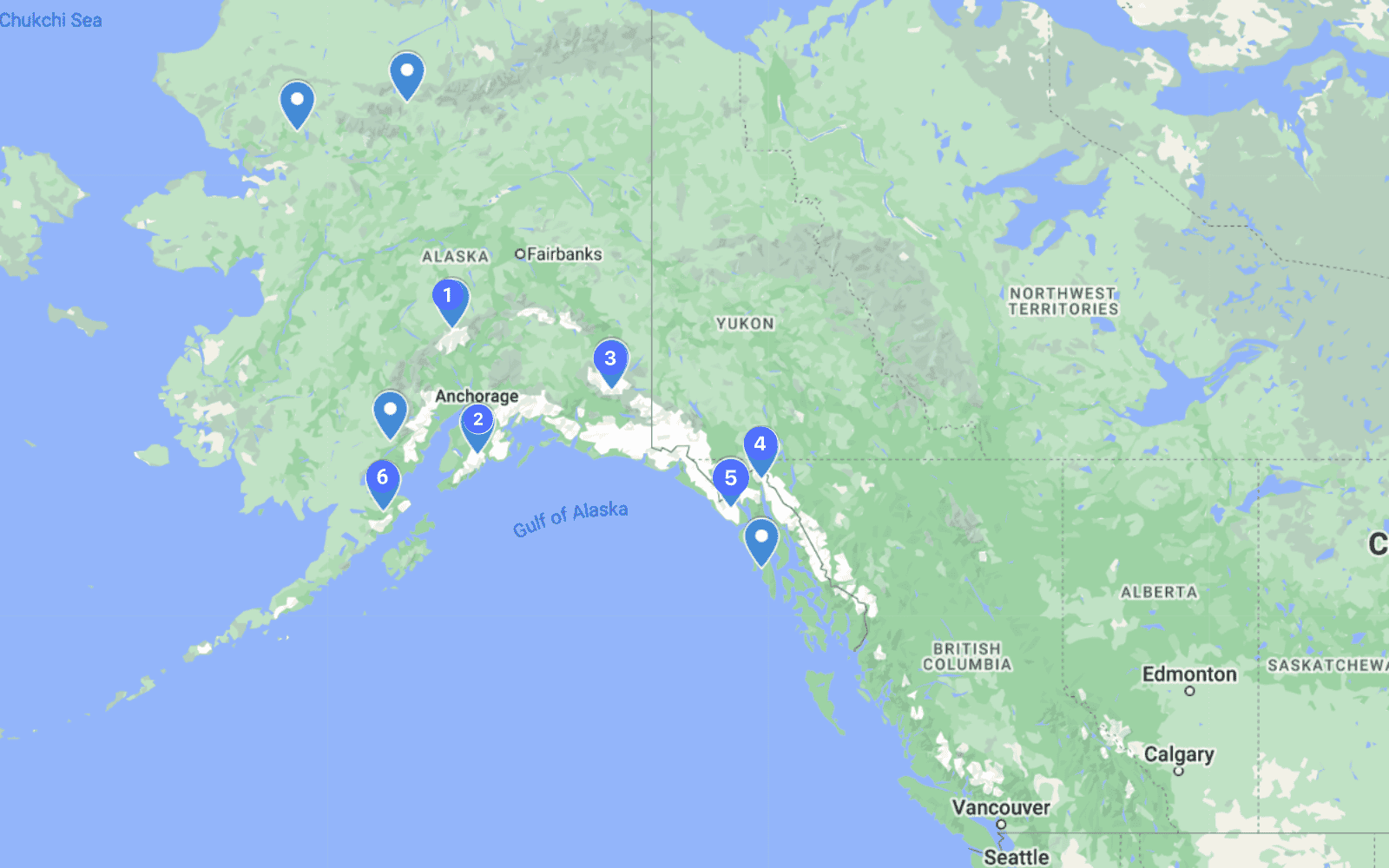
This guide results from extensive research and is the longest post we've ever put together. We hope it is a valuable resource for anyone planning an Alaskan adventure or simply dreaming of visiting one day.
For more insights into traveling in Alaska, including tips on budgeting and navigating the state, check out our posts on the cost of a trip to Alaska and a guide for driving to Alaska.
If you found this post helpful, we'd love for you to share it. We've prepared exceptional images for pinning to Pinterest, making spreading the word about Alaska's stunning national parks easy.
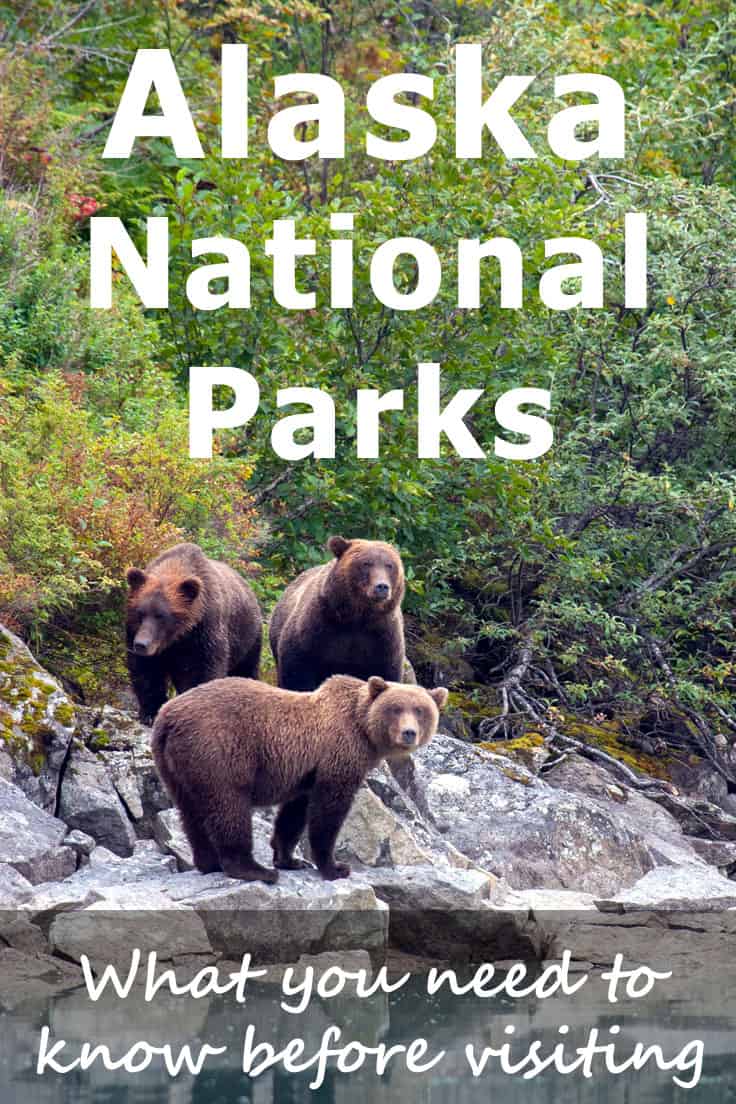
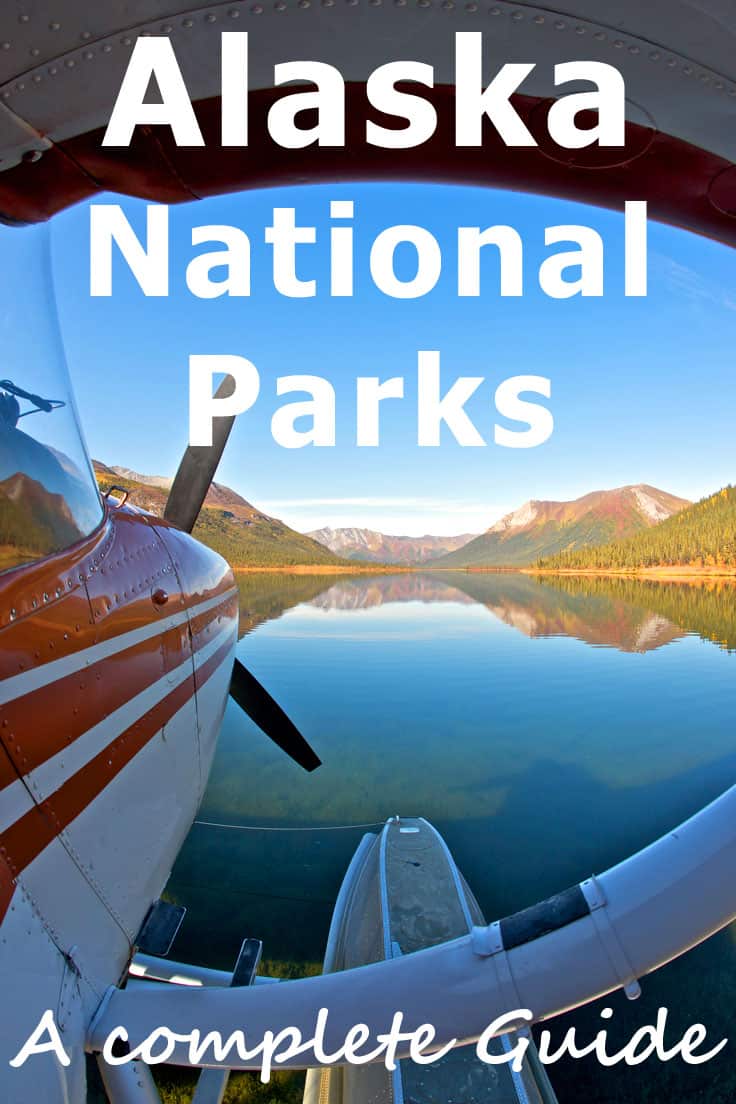
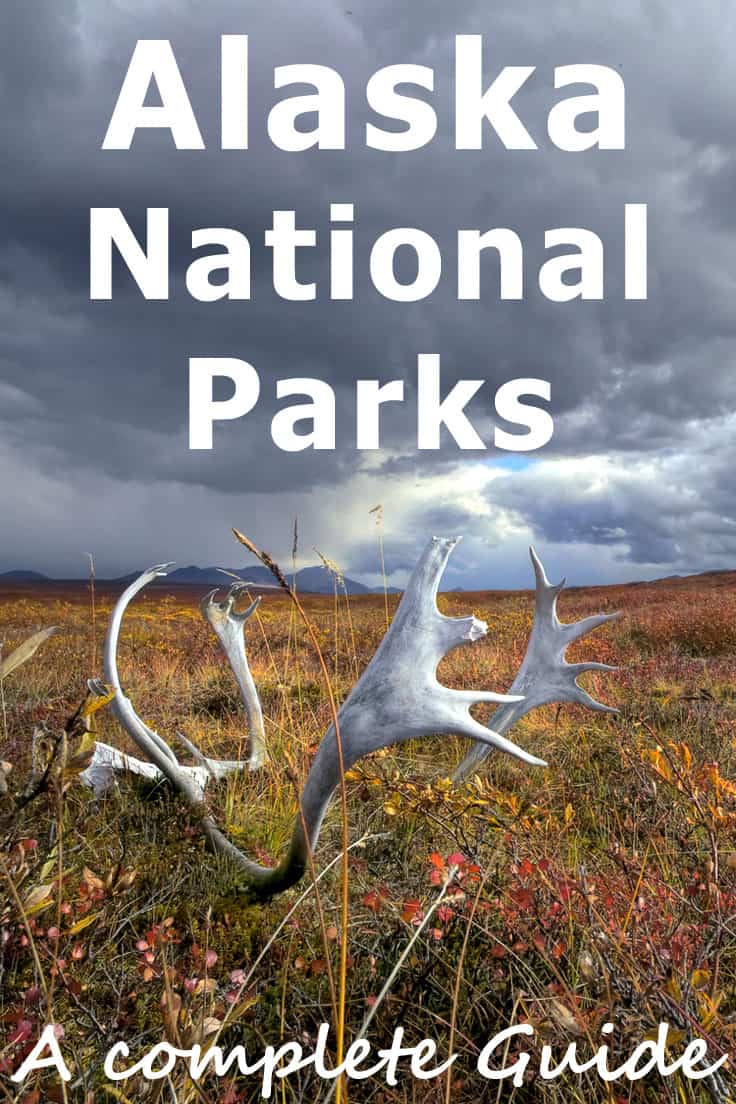


Hi Anne,
If you could only go to either Glacier Bay or Kenai Fjords, which one would you pick if you were simply looking for the best, most stunning scenery? (or would another one make the list first?)
Hi Meg,
We haven’t tried Glacier Bay but I heard it’s amazing. With no time or budget constraints that would have been my first choice for scenery and overall experience. Again, basing this off stories I’ve heard from people who’ve been to Glacier Bay NP, not on our own experience (yet!)
I’m a bit confused on ALL of the National Park website of Alaska. Some mentions its open year round but closed during winter or closed after September. Why does it say open year round but closed October – ETC. Would you help me understand this as its a bit hard to get a hold of them. Thank you so much!! and Thank you for this lovely blog!
Hi Cathy,
I’m glad you enjoy the blog and sorry about the late reply here.
I am guessing the differences reflect the closures of the visitors center, while the park grounds are actually open year-round. So, if you wanted to visit during wintertime (sledding?) you could, but there would be no services or ranger activity.
I’m not sure about their COVID availability, but in the past, I always managed to get a hold of park rangers via email, so I would try that.
I enjoyed reading the information that you put out, and thank you for doing so. I’m trying to make plans to visit Alaska.
I’m definitely going to see the glaciers and whale watching. I also would like to go dog sledding and deep sea fishing. Do you have any information about them?
Hi Sharon,
We did our whale and glacier watching while visiting Kenai National Park and staying in Seward. Dog sledding is usually available during wintertime. For summertime, I’ve seen excursions that offer to fly you to a glacier where you can experience dog sledding. We settled for seeing the free dog tour in Denali National Park. Fishing trips are available from every port town. There were several charters going out of Seward, and from Valdez too. I would Google to find them specifically.
Fabulous information! We were in Alaska for 3 weeks last summer, had such a great time we are going back this year and heading into the Yukon Territory! My travel “diary” website is below…still trying to work on my blog (yours is great by the way!). Heading on any big trips this summer?
Hi Lisa,
Looks like you had a great Alaska trip! I really hope you manage to set up a blog and write more about it. If you’re interested in guest blogging here to share your travel stories, let me know. I’d love to have fellow travelers guest blog here occasionally!
The Yukon is fantastic and quite different from Alaska in many ways. Having visited both, I think the Yukon has much more of a “last frontier” feel to it. I’m sure you’ll have an awesome time! Don’t forget to read my post about traveling the Alaska Highway too.
Where to next? Great question. My older son is taking a university degree now so we think a long trip may not be a good option for a while. We’re thinking a Europe excursion in October at this point. Prague is the leading contender though Scandinavia and Spain/Portugal are not out of the question.